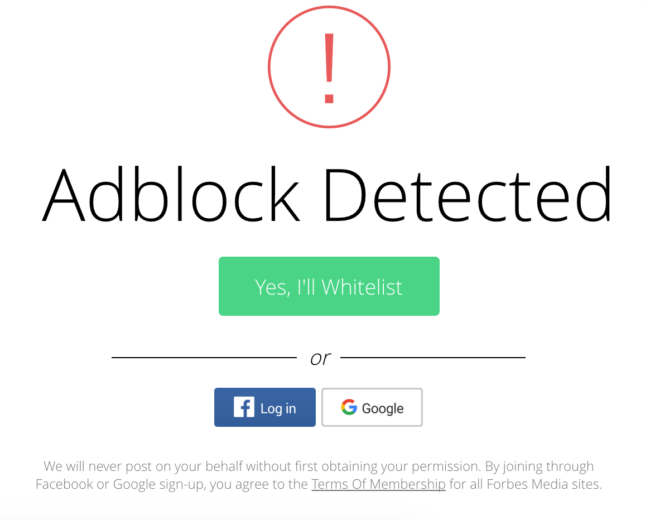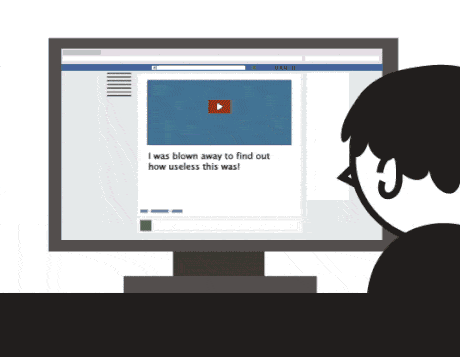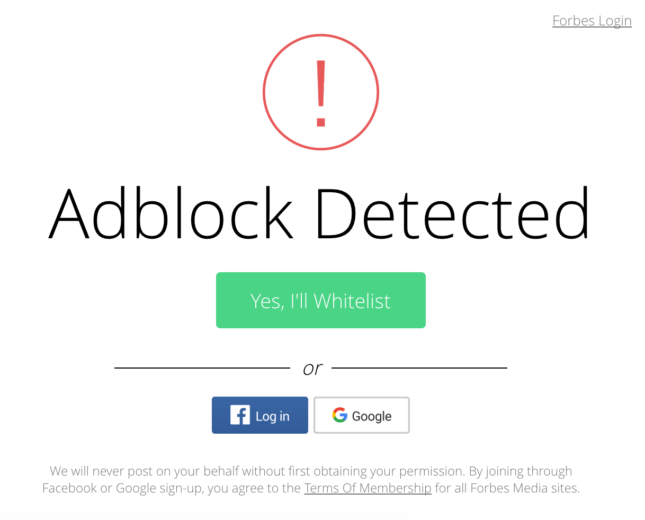Display advertising has ruined the ethics of journalism.
In all fairness, that is a fairly large exaggeration. With that said, I am proud to be a member of this industry and equally proud of the company and clients I represent. Despite this, I am NOT proud of the indirect impact PPC has on digital media.
Long gone are the days in which print news outlets were supported by full page ads, a busy classified section, and growing paid subscriptions. The digital revolution has impacted few markets to a greater degree than journalism. The transition to digital has created countless alterations to the news landscape ranging from a retooled content creation approach to an exponential growth in news sources.
[bctt tweet=”The unique dynamics of display advertising have had a major influence on journalism and blogging.” username=”Will_Larcom”]
Among the many structural shifts required to make the digital leap, scaled monetization of online content is among the most complicated of tasks. Enter display advertising to help fill the void. Not surprisingly, the unique dynamics of display advertising have had a major influence on journalism and blogging. The adaptation to the business of online advertising has had a profound impact on journalism including good, bad, and ugly outcomes.
The Good
Digital transition has created ample new opportunity for online publications. With this shift, however, comes equally difficult sets of growing pains. I witnessed this firsthand as my father, a long-time journalist, watched the newspaper he worked at cease traditional print back in 2009. With print subscriptions slowly decreasing, the need to restructure and rebrand became imminent. The closure of his paper, one of the first in a major market, was a clear indicator that significant change was underway.
To this day, the extremely complex issue of monetizing online publication remains very much in flux. Free, high-quality content can be found almost anywhere on the web (cough, cough), an issue that provides tremendous obstacles for major news companies. In this regard, digital advertising becomes the true savior of the digital news medium. A quick glance at nearly any news publication will yield evidence of ecommerce retargeting efforts or prospecting conducted via programmatic advertising. From native ads to scheduled buys, and certainly dynamic, auction-based placements, digital advertising is a crucial element to the revenue stream of nearly every major publication.
Amidst shrinking staff and increased competition, many publishers require that readers disable ad-blockers in order to view their content. While admittedly many of us prefer to avoid such creative while seeking today’s top headlines, the simple trade of content for ad impression volume between consumer and publisher has become absolutely vital.

Beyond selling advertising space, digital advertising also allows publications to connect with an audience previously out of their reach. In particular, social media provides an excellent opportunity to reach a new audience and generate reoccurring visitors.
While certainly not the sole contributor, display advertising can be greatly credited with providing a revenue stream for online publications that otherwise would not exist. There is simply no denying its important place in the transition from print to digital media.
The Bad
Unfortunately, not every aspect of banner advertisements evokes a positive impact on digital journalism. The dynamics of driving internet traffic effectively reframes the short term goal of each article. Print media’s end game was sustaining paid subscriptions through a combination of informative, entertaining, and thought-provoking content. While this remains a central focus, the ability to drive engagement in search of guaranteed revenue takes priority.
The need to drive maximum traffic manifests itself in a variety of less than constructive ways. For one, we begin to see headlines that sensationalize news rather than provide an accurate and concise summation. Content frequently becomes diluted as quality is sacrificed for quantity. Furthermore, niche pieces and long-form journalism have become increasingly rare in major news outlets. Many publications have opted for tactics that garner traffic at the expense of the core product.

An extreme example of this issue is the prevalence of clickbait journalism. A combination of vague assertions and out-of-context quotes are utilized to produce a click above all else. My goals aren’t to place the blame squarely on our industry, for that would be an extrapolation of my point well beyond its intended purpose. However, it would be irresponsible to ignore the traffic based motivations triggered by the reality of impression based advertising.
The Ugly
Beyond the shift in content focus and clickbait headlines, the urge to push traffic has created a chaotic race to be first. Fact checking and journalism seem to be turning into two increasingly independent disciplines. Take for example the tragic, yet heartwarming holiday story of a Santa Claus actor who affectionately embraced a dying boy during his waning moments. Turns out, the story is likely fictional with no sources to verify the account. Despite that, countless major publications picked up the story without verifying the account. By the time the farce was revealed, the benefit of the traffic had already been gained. The impact of the fallacy is lost amidst the endless slate of content filling the next news cycle.
From a client’s perspective, the sheer volume of display sites can lead to ads showing on undesirable placements. While category and frequently updated site exclusion lists are imperative, there simply isn’t an easy solution for avoiding every site with a potentially controversial or harmful stance. Any account manager that has run a placement report can attest to the endless supply of websites that seemingly exist for the sole purpose of driving display impressions.
Negating specific sites or categories is in an important conversation to have with your client in order to ensure you are not acting against their interests. Furthermore, many of these decisions will be dictated by data that reveals how some polarizing sites simply don’t deliver.
Concluding Thoughts
Ultimately, there is no denying that display advertising remains integral to the success of digital journalism in the foreseeable future. Despite representing a critical element to the digital business model, online advertising is not without its unintended consequences. From clickbait journalism to rushed reporting, the indirect impact of our industry is an extremely complex issue to address.
In regards to strategy, we as advertisers must challenge ourselves to do our small part in remedying the situation. We must continually supply high-quality creative that maximizes engagement and minimizes the intrusive feel. There is an obligation to both the client and to our industry to exclude low-quality sites via routine placement reports. While it certainly doesn’t fall exclusively on the shoulders of advertisers to address the ethics shifts in the news world, it is extremely beneficial to the future of our industry to remain aware of our impact outside of just clicks and conversions.
Cover photo courtesy of Greenzowie (Flickr)




